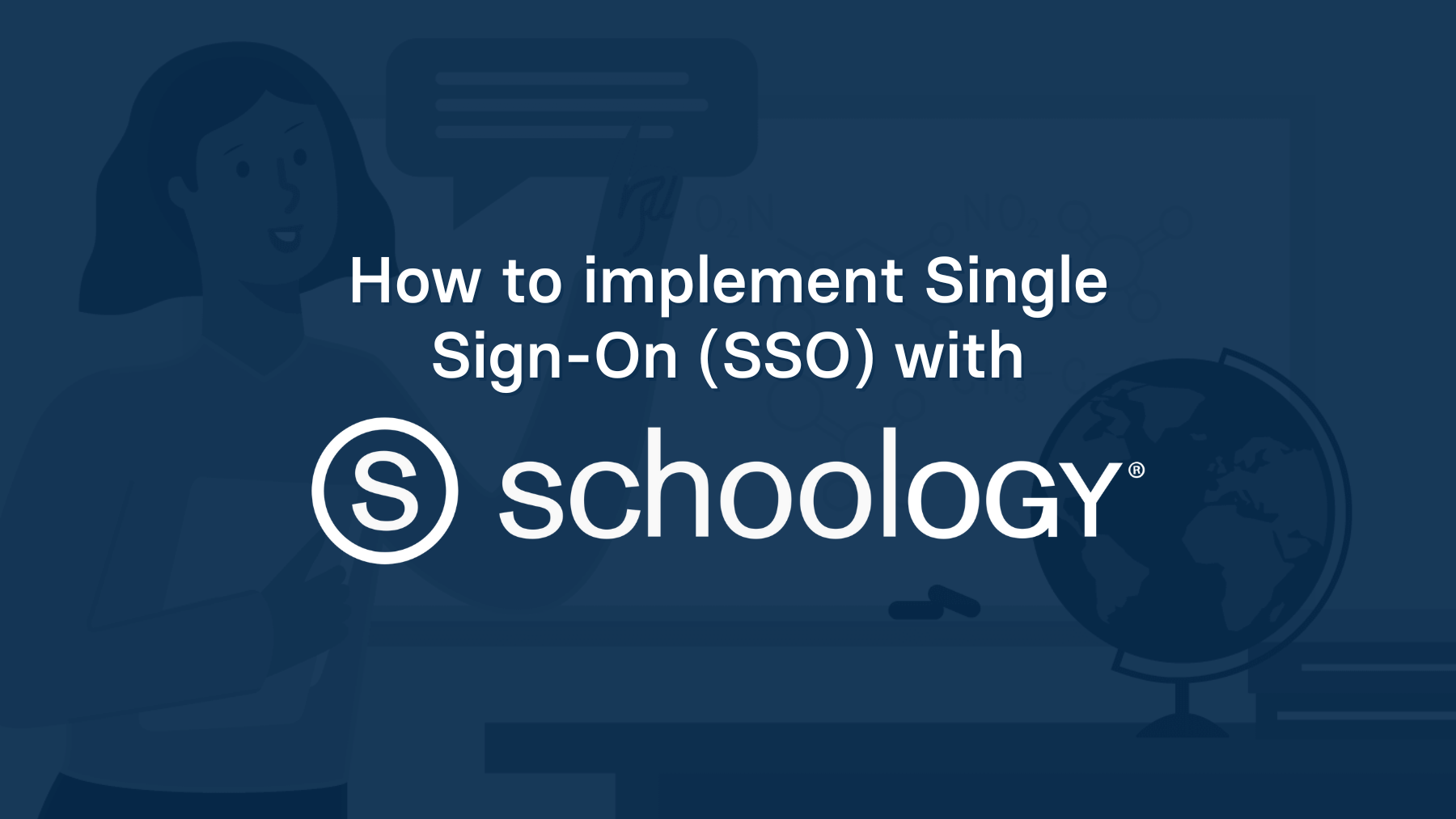This article breaks down what Schoology SSO is, the integration options available to developers, how to support login via IAM providers like Clever and ClassLink, and what to troubleshoot when things don’t go as planned.
What Is Schoology SSO Login?
Schoology SSO login allows users (students and educators) to sign in to your edtech tool using their Schoology credentials. This simplifies access, reduces password management issues, and improves user adoption. Depending on your integration, users might click a "Sign in with Schoology" button on your login page or launch your app from within Schoology itself.
What Are the Options for SSO Integration With Schoology?
Option 1: Schoology SSO via API
This method uses Schoology’s API directly. Users authenticate through Schoology, and your platform receives a token to access user data.
- Use case: You want users to start on your login page.
- Pros: Greater control over user experience.
- Cons: Must handle token exchange securely, plan for redirect URIs, and protect PII.
Option 2: Schoology SSO via LTI
Schoology supports LTI 1.3. LTI enables in-context (read: location-specific) launches from Schoology courses.
- Use case: You embed your tool in a Schoology course via an iframe.
- Pros: Common, standard-based SSO with role/context data.
- Cons: You’re users are launched from within Schoology, and some limitations in data exchange.
Option 3: Schoology SSO via a unified API like Edlink
Edlink provides a unified API that abstracts away the complexity of integrating with Schoology directly via API or LTI. By aggregating both direct and standard-based methods, Edlink helps your app support multiple Schoology SSO methods without having to build repetitive integrations.
- Use case: You want one implementation that supports Schoology and other LMSs.
- Pros: One integration point, less developer resources, faster launch.
- Cons: You rely on a third-party partner (Edlink) for the abstraction layer.
Does Schoology Support IAM Providers Like Clever or ClassLink?
Yes. Many districts configure Schoology to authenticate users through Clever or ClassLink. If your product also supports those IAMs (identity and access managers), you may be able to extend SSO coverage.
- Clever/ClassLink can act as the IdP (identity provider).
- Schoology becomes the SP (Service Provider).
- Your product can then match Schoology-authenticated users by their Clever/ClassLink ID.
Onboarding a School for Schoology SSO
Here’s what you’ll need:
- Coordination with the school’s Schoology admin to set up the integration method (like an API key)
- Clarification of which login URL the school uses (e.g. custom domain)
- An understanding of what user data you’ll request
Best practice: limit access to only what’s needed to reduce compliance risk.
Common Pitfalls and How to Avoid Them
- Redirect URI errors: Always whitelist multiple domains if schools use custom ones.
- Custom domain confusion: Confirm login domain early in implementation.
- PII overreach: Ask for only what you need.
- LTI tool misconfiguration: Ensure the shared secret, key, and launch URL are correct.
API SSO Troubleshooting Tips
- Is the OAuth signature valid?
- Is the callback URL registered correctly?
- Are tokens being stored securely and refreshed when needed?
LTI SSO Troubleshooting Tips
- Is the launch URL resolving correctly?
- Are the key and shared secret correct?
- Is your tool sending back valid launch parameters?
*Updated | July 30, 2025
Read More on Schoology
Here are other resources on Schoology and Edlink to help you on your integration journey:
- How to start a Schoology Integration
- The Challenges of Integrating With Schoology
- How Do I Choose? API vs. LTI Schoology Integrations
- Introducing Edlink
- Our Mission at Edlink
- What is the Edlink Unified API?
Want to Get Started?
If you're looking for a partner to guide you through developing integrations, then let us introduce ourselves. We're Edlink!

